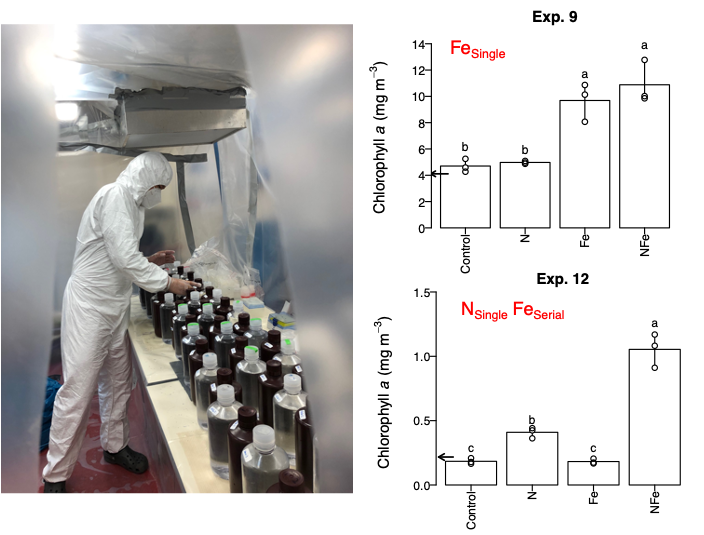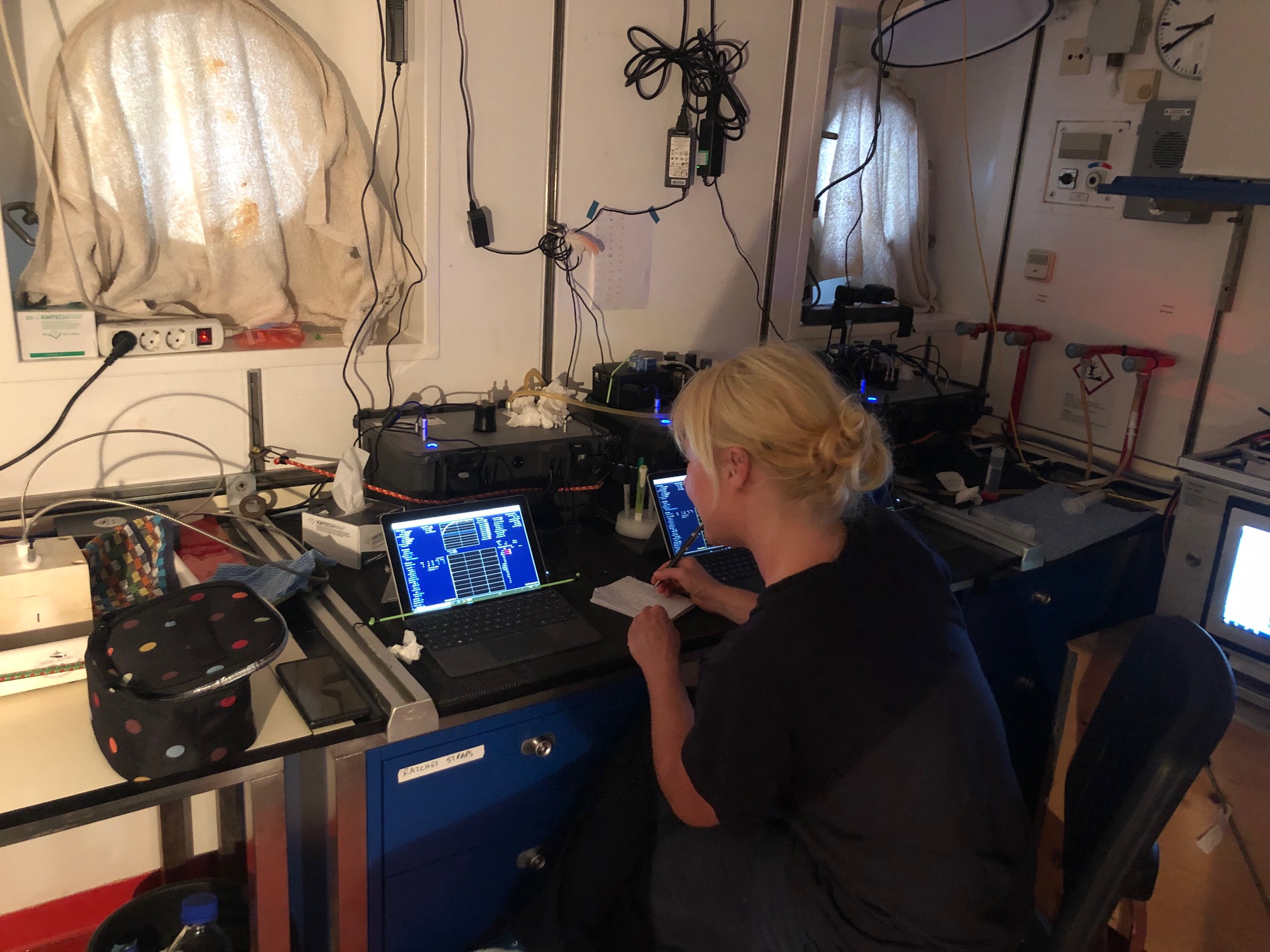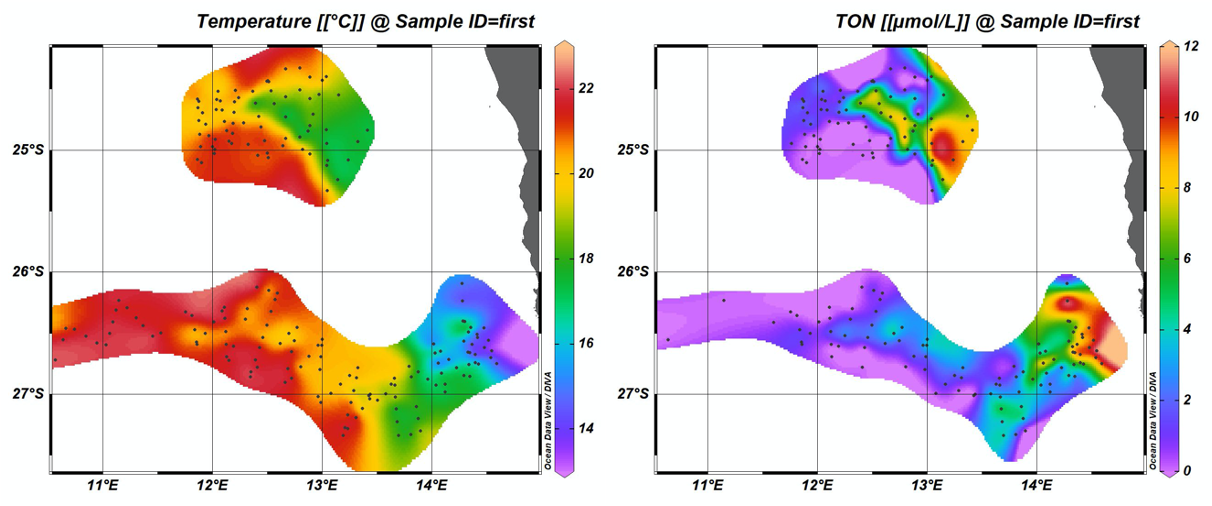6th weekly report (19.02.2023 – 25.02.2023)
Saturday 25th February 2023
The fifth week of the research expedition M187: we have been making progress with the transect we are conducting outwards into the South Atlantic subtropical gyre. We plan a total of 11 stations along this section, starting from where we finished the two filament studies and ending in the central South Atlantic, at 5 °W. Surface seawater temperatures have already risen by >8 °C since our near-coastal stations. Accompanying this temperature increase are reductions in nutrient concentrations, in particular those of nitrate, which have decreased to levels below that of the detection limit of the instrument we have on board. To achieve accurate nitrate concentration analysis for these seawaters, we are collecting and freezing additional samples that will be transported back to the home laboratory to be analysed for concentrations down to less than 10 nanomoles. In contrast to nitrate concentrations, phosphate and silicic acid concentrations, also major nutrients for phytoplankton, have decreased along the transect but remain relatively elevated with respect to phytoplankton requirements.
Alongside the rising temperatures and decreasing nutrient concentrations, concentrations of phytoplankton are also declining. To work out which nutrients are limiting phytoplankton growth, a team on board have been conducting bioassay experiments, where surface seawater is collected under trace-metal-clean conditions in clear plastic bottles, nutrients are added, they are incubated at the temperatures and light conditions of the surface ocean for 48-hours, and the resultant phytoplankton response is detected. From previous work we know that nitrogen and iron are the most important limiting nutrients in this system (and elsewhere in the global ocean), but we are still unsure on the relative role of each and if these two nutrients decline to levels where both simultaneously ‘co-limit’ phytoplankton growth. We are therefore performing experiments where nitrogen and iron are added alone and in combination. So far, we have found interesting phytoplankton responses, with both iron and nitrogen playing important roles. In the filaments we observed iron limitation of phytoplankton growth, but as we moved away from the filaments and nitrogen concentrations strongly decreased, we observed increasing growth responses to nitrogen supply. However, even in the latter cases, the phytoplankton response when both nitrogen and iron were supplied together was much larger than when nitrogen was added alone, suggesting low iron availability is still playing an important role.

In addition to biomass changes in phytoplankton, some of the scientists are conducting measurements of phytoplankton physiology, in order to assess for changes under different environmental conditions. Specifically, they are assessing how well the phytoplankton are photosynthesising, and if they are showing signs of stress due to the low nutrient availability. In order to do this, they are using special types of fluorometers that can be used to detect changes in photosynthesis. We have a scientist from Chelsea Technologies onboard who is using a newly developed instrument to probe how phytoplankton photosynthesis responds to different light levels under the different nutrient limitation regimes encountered. The instrument works by shining a series of very bright, very short duration light flashes onto phytoplankton. The phytoplankton absorb the light and this stimulates photosynthesis. In the process, phytoplankton emit a small amount of red light, termed fluorescence, that can be detected. The amount of fluorescence is closely related to photosynthesis. Specifically, by observing how the emitted fluorescence changes over the series of light flashes we can get information about how the photosynthetic machinery in phytoplankton is working. So far, we have observed major differences between in the filaments, where iron is the limiting nutrient, and outside, where nitrogen is limiting. This is due to the major impact of iron limitation on photosynthesis due to its essential role in several of the photosynthetic proteins.

As we sail further into the South Atlantic subtropical gyre the weather has been characterized by warm sunny days dotted with rain showers (and the occasional rainbow) and a gentle swell coming from the south. There continues to be excellent cooperation between the scientists and Captain Korte and team and, despite several weeks without fresh supplies, the food remains excellent.

With best regards from 3.58 °W und 26.7 °S
Tom Browning
GEOMAR Helmholtz Centre for Ocean Research Kiel
